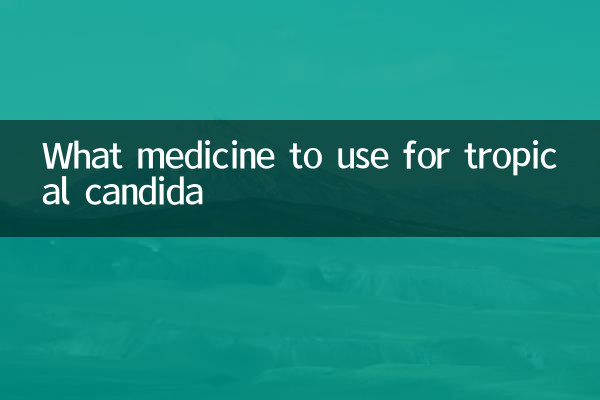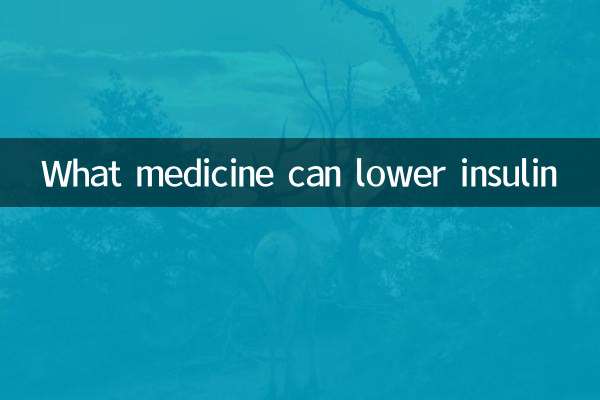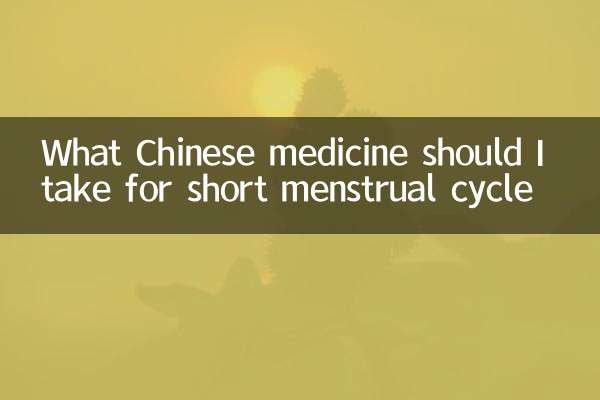Title: What medicine should I use for tropical Candida
In recent years, Candida tropical infection has gradually become a global health issue. This fungal infection is more common in tropical and subtropical regions, but its infection range is expanding with climate change and population movement. This article will combine popular topics and hot content in the past 10 days to introduce you in detail the therapeutic drugs and related information of Candida tropicalis.
1. Introduction to Candida tropical

Candida tropicalis is a common pathogen in the genus Candida, second only to Candida albicans. It is usually found in the human skin, mouth and intestines, but it may cause infections when immunity is low, such as urinary tract infections, blood infections (candidiasis), etc.
2. Treatment drugs for Candida tropicalis
The following are currently commonly used in clinical practice to treat tropical Candida infection:
| Drug Category | Representative medicine | Mechanism of action | Applicable symptoms |
|---|---|---|---|
| Azole antifungal drugs | Fluconazole, itraconazole | Inhibiting ergosterol synthesis in fungal cell membranes | Mild and moderate infection |
| Polyene antifungal drugs | Amphotericin B | Binding with ergosterol in fungal cell membranes leads to cell death | Severe infection |
| echinocins | Caspofenin, micafenin | Inhibiting the synthesis of β-1,3-D-glucan in fungal cell walls | Drug-resistant infections |
| Pyrimidine analogue | Flucytosine | Interfere with fungal DNA and RNA synthesis | Combination medication |
3. Recent hot topics
1.Drug resistance issues:Research data from the past 10 days show that the drug resistance rate of Candida tropical to fluconazole has increased, reaching 15-20% in some areas. This has sparked widespread discussion in the medical community about the rational use of antifungal drugs.
2.New treatment options:A study published in the journal Antimicrobial and Chemotherapy showed that the combination of echinocins and azoles may improve the therapeutic effect on drug-resistant strains.
3.Preventive measures:With the increase in cases of Candida tropical infection, medical institutions have strengthened the monitoring and preventive medication for high-risk populations (such as ICU patients and cancer patients).
4. Precautions for medication use
1.Drug selection:Appropriate drugs should be selected based on the infection site, severity and drug sensitivity test results. Fluconazole can be used for mild infection, while amphotericin B or echinocin may be required for severe infection.
2.Treatment control:Treatment usually takes 7-14 days after the symptoms disappear, and blood infection may take longer (4-6 weeks).
3.Adverse reactions:Different drugs may cause different side effects, such as azoles that may cause liver dysfunction and amphotericin B may cause nephrotoxicity.
5. The latest global statistics
| area | Infection rate (%) | Main types of infection | Drug resistance rate (%) |
|---|---|---|---|
| Southeast Asia | 12.5 | Urinary tract infection | 18.3 |
| South America | 9.8 | Blood infection | 15.7 |
| Africa | 7.2 | Skin infection | 12.1 |
| North America | 5.6 | Respiratory tract infection | 10.4 |
| Europe | 4.3 | Gastrointestinal infection | 8.9 |
VI. Prevention and advice
1.Personal hygiene:Maintain good personal hygiene habits, especially those with low immunity, should pay attention to the cleansing of the skin and mucous membranes.
2.Reasonable medication:Avoid unnecessary antibiotic use and prevent bacterial imbalances from causing fungal overgrowth.
3.Regular inspection:People with high risk should undergo regular fungal screening, early detection and treatment.
4.Diet conditioning:Probiotic supplementation is appropriately supplemented to maintain the balance of intestinal bacterial flora, which helps prevent Candida infection.
Conclusion
The treatment of Candida tropical infection requires a comprehensive consideration of a variety of factors, including the site of infection, severity and drug sensitivity. With the emergence of drug-resistant strains, rational use of drugs and preventive measures have become particularly important. It is recommended that patients undergo treatment under the guidance of a doctor and do not take medication on their own. At the same time, the global medical community is actively studying new antifungal drugs and treatment options to address this increasingly severe public health challenge.

check the details

check the details